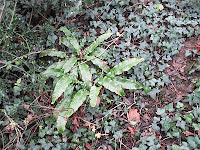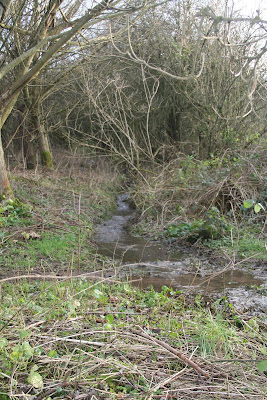
Bracken - the one with a central stalk,

Harts Tongue with rosettes of simple fronds,

Polypody where the fronds are "simply pinnate", which means just divided once - each leaflet of the frond is called a "pinna",

and Male Fern, where the fronds are bi-pinnate, which means divided and then divided again - each pinna is divided into "pinnules".
Today's new fern is the Broad Buckler Fern. This one is "tri-pinnate", so each pinna is divided into pinnules and each pinnule is divided into "pinnulets". Very feathery.























